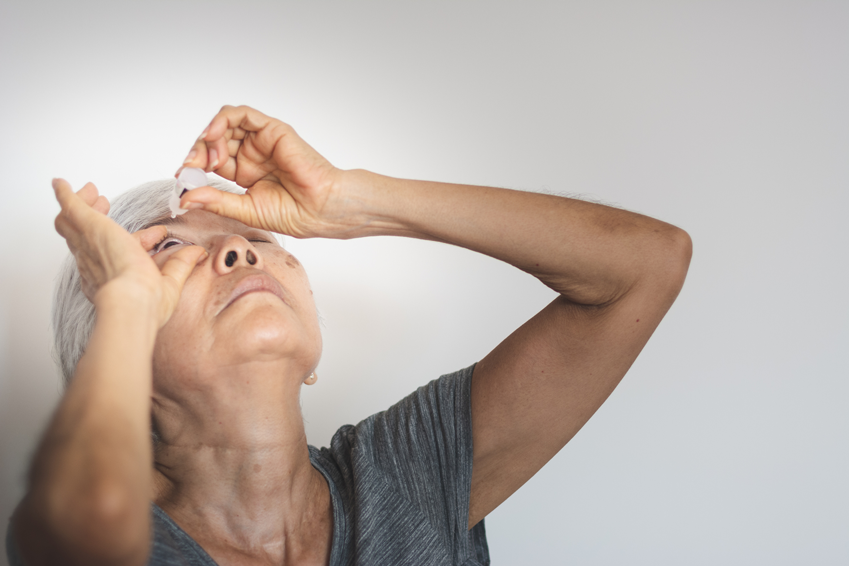It’s called photophobia – just what is it, and why might it occur?
An article in the National Institute of Health calls it an “abnormal sensitivity to light” which can induce “exacerbating pain.”
Photophobia is a symptom of many maladies, including neurological disorders, eye diseases and infections. One of the most overlooked causes, however, is prescription medications that cause photophobia as a side effect.
Several drugs, for instance, cause dry-eye syndrome, which is one of the most common eye-related causes of photophobia. Another related condition is diplopia or double vision. Here is a list of drugs suspected to cause photophobia.
1. Cardiovascular Drugs

A number of medicines used in the treatment of heart-related problems can cause light sensitivity as a side effect.
a. Physicians prescribe beta blockers to treat angina, regulate heart rhythms and lower blood pressure. This particular type of medicine may cause dry-eye syndrome or diplopia, both of which have been linked to light sensitivity.
Some of the better known beta blockers include acebutiol (Sectral), atenolol (Tenormin), bisoprolol (Zebeta), metoprolol (Lopressor, Toprol-XL), nadolol (Corgard), nebivolol (Bystolic) and propranolol (Inderol LA, InnoPran XL) Note how the generic name of most of these drugs end in -olol.
b. Diuretics reduce body fluids and are often prescribed to treat blood pressure. The most common diuretics are thiazides such as holorothiazide (Diuril), chlorthalidine, hydrochlorothiazide or HZTZ (Microzide), Indapamide and Metolazone. Dry-eye syndrome may be listed as one of the side effects of these drugs.
c. Amiodarone, a drug used to regulate heartbeat, can produce light sensitivity through the skin and exposure to the sun. In addition it may cause dry eye syndrome, which, again, produces eye-related photophobia.
d. Digoxin, a medicine used to regulate the heart rate, can cause diplopia, edema (swelling) of mydriasis or dilated pupils. All of these effects can result in light sensitivity.
2. Anti-Infectives

These form another group of medications that can bring on photophobia. Specific medicines in this category include sulfonamides, tetracycline, anti-malarials, anti-tuberculars and antivirals. Their link to light sensitivity lies in the side effects of eye-swelling, dry-eye, pupil dilation and double vision.
3. Anti-Ulcer Drugs

These medications may cause increased blood in the cornea, raising the potential for photophobia. Some of the more popular medicines include Cimetidine, Famotidine, Nizatine and Ranitidine. (Fun-fact: Notice how these medical names end in “dine”.
4. Decongestants

Many medicines targeting stuffy noses and sinus problems contain phenylephrine, a drug that dilates blood vessels in the body as well as the pupils.
Dilation reduces the control of light entering the eye, increasing light sensitivity. These drugs also increase the risk of dry eyes. Two of the best known decongestants are Dimetapp and Sudafed.
5. Drugs for the Eyes

Some eye disorders may be treated with eye drops containing atropine. It relaxes eye muscles and increases risk of dilation.
6. Drugs for MS

Doctors prescribe fingolimod (Gilenya) to slow the progression of multiple sclerosis. It may cause edema/swelling of the eye, and produce photophobia.
7. But wait, there’s more…

Various treatments may produce photophobia as a side effect. These include NSAIDS such as aspirin, ibuprofen and naproxen, and corticosteroids, medicines for thyroid and other hormonal treatment, some anti-depressants and illegal drugs such as amphetamines, cocaine and cannabis. The primary effects are dry eyes and pupil dilation.
Readers need to remember that side effects listed for any medications are merely potential problems that may or may not be serious. Reactions to any prescription drug vary not only by each individual, but also by dosage strength, the frequency of use, and length of time the drug has been used.
With most of the drugs listed above, the side effects involving photophobia were minimal to rare and usually temporary in nature. Nevertheless, if you are taking any of these drugs or medications and experience discomfort or pain from light, there may be a serious health or eye problem or a side effect from a medicine you have been using.
Do not stop taking any medication a doctor has prescribed without talking to your physician first. If at any time you have photophobia, it is vital to see a physician to determine cause and treatment. Protect your eyes and your health through awareness and staying informed.

